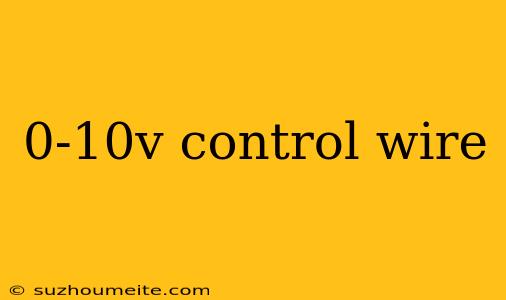0-10V Control Wire: Understanding the Basics
Introduction
In the world of automation and control systems, 0-10V control wires play a crucial role in transmitting signals between devices. These wires are widely used in various industries, including HVAC, lighting, and industrial automation. In this article, we'll delve into the basics of 0-10V control wires, their working principle, and common applications.
What is a 0-10V Control Wire?
A 0-10V control wire is a type of analog signal wire that transmits a voltage signal between 0 and 10 volts. This signal is used to control the operation of a device, such as a valve, damper, or motor. The voltage signal is proportional to the desired output of the device, allowing for precise control and modulation.
How Does it Work?
The working principle of a 0-10V control wire is based on the concept of analog signaling. Here's a step-by-step explanation:
1. Signal Generation
A controller or sensor generates a 0-10V DC signal, which is proportional to the desired output of the device.
2. Signal Transmission
The 0-10V signal is transmitted through the control wire to the device.
3. Signal Reception
The device receives the 0-10V signal and interprets it to adjust its operation accordingly.
Common Applications
0-10V control wires are widely used in various applications, including:
1. HVAC Systems
0-10V control wires are used to control heating, ventilation, and air conditioning systems, including fan speed, valve position, and compressor operation.
2. Lighting Control
These wires are used to control lighting systems, including dimming, switching, and color changing.
3. Industrial Automation
0-10V control wires are used to control industrial processes, including motor speed, valve position, and pump operation.
Advantages and Limitations
Advantages
- High precision and accuracy
- Easy to install and maintain
- Cost-effective
- Wide range of Applications
Limitations
- Limited distance range (typically up to 100 meters)
- Susceptible to Electromagnetic Interference (EMI)
- Requires a stable power supply
Conclusion
In conclusion, 0-10V control wires play a crucial role in various automation and control systems. Their ability to transmit precise analog signals makes them an essential component in many industries. By understanding the basics of 0-10V control wires, you can design and implement effective control systems that meet your specific needs.
